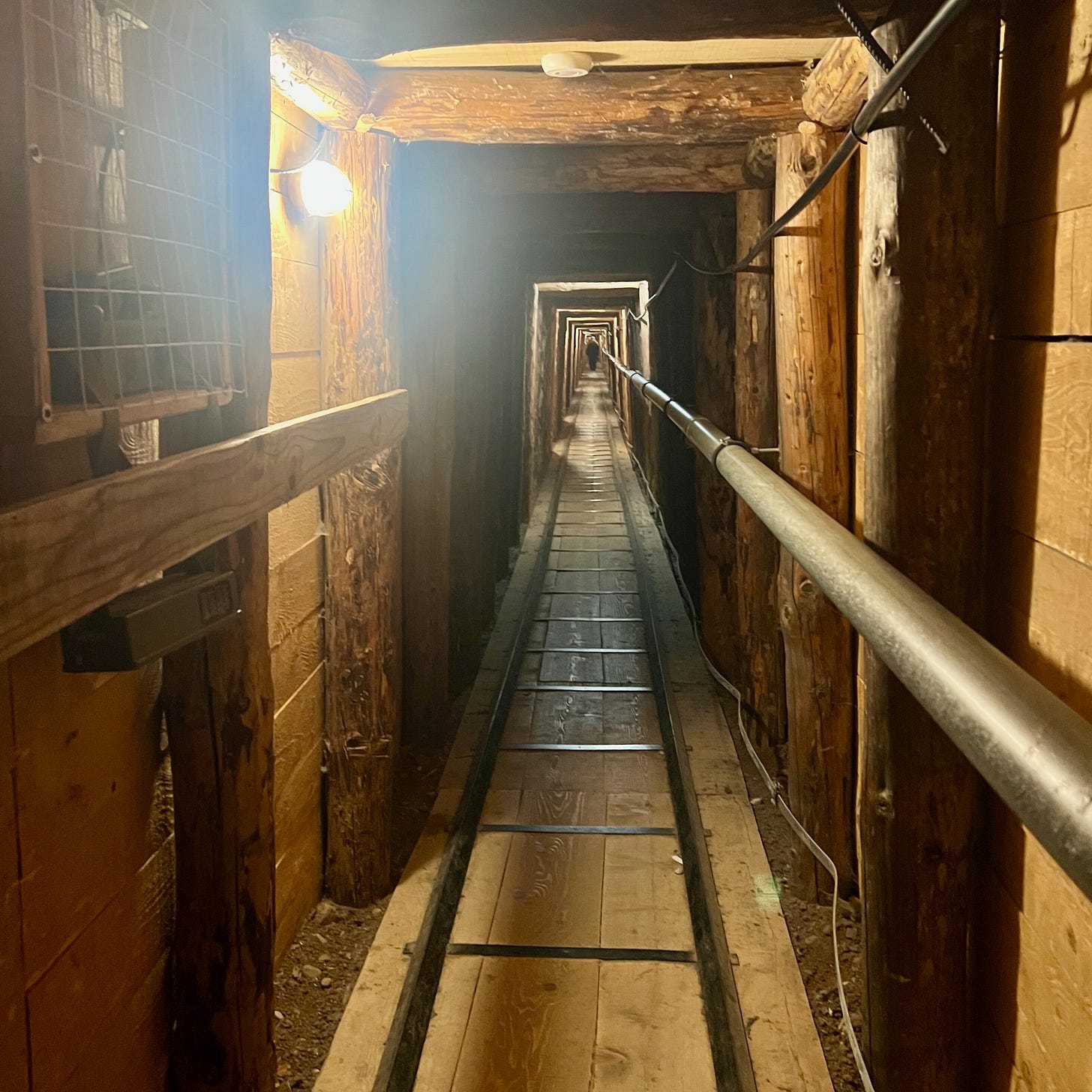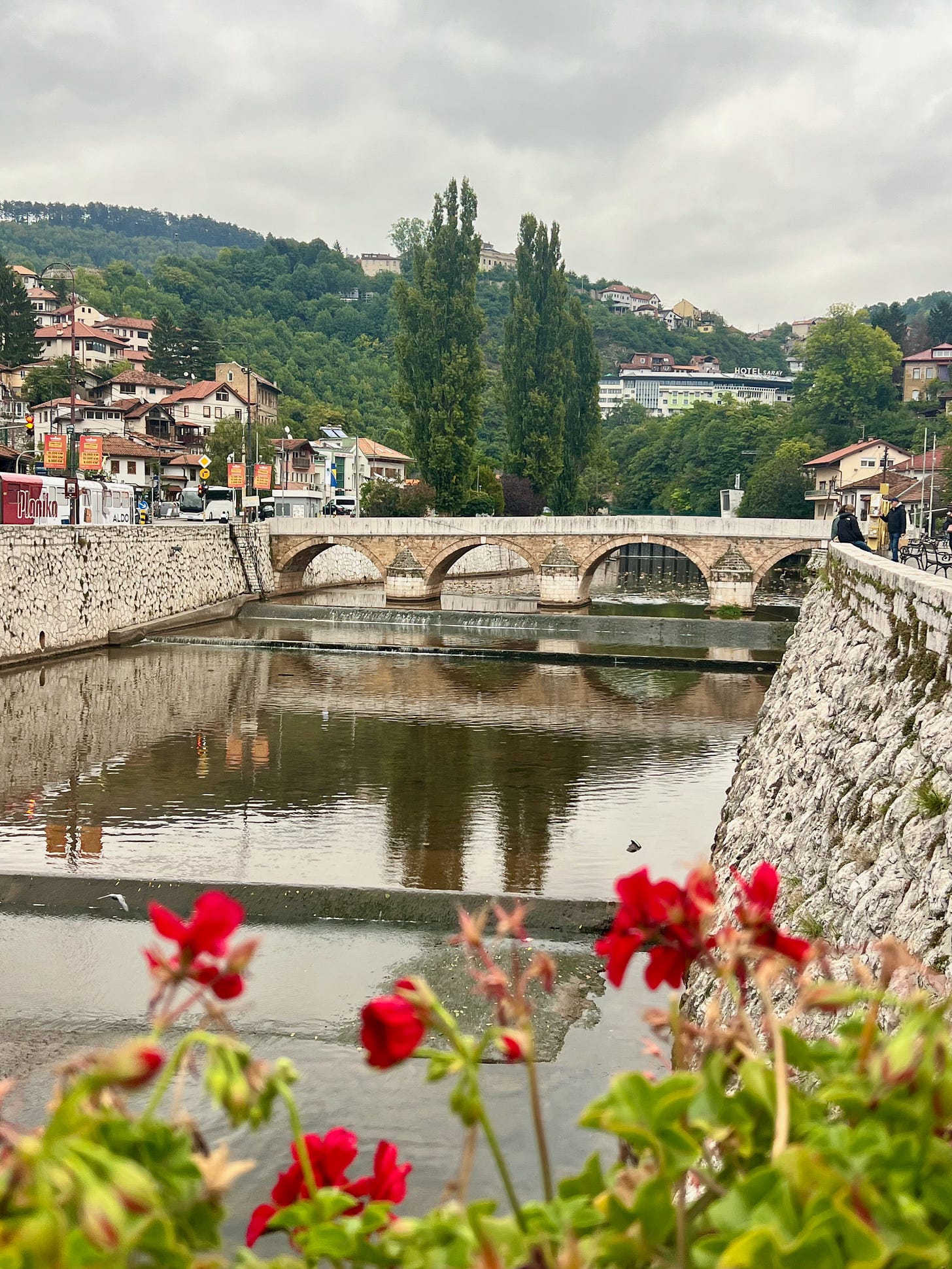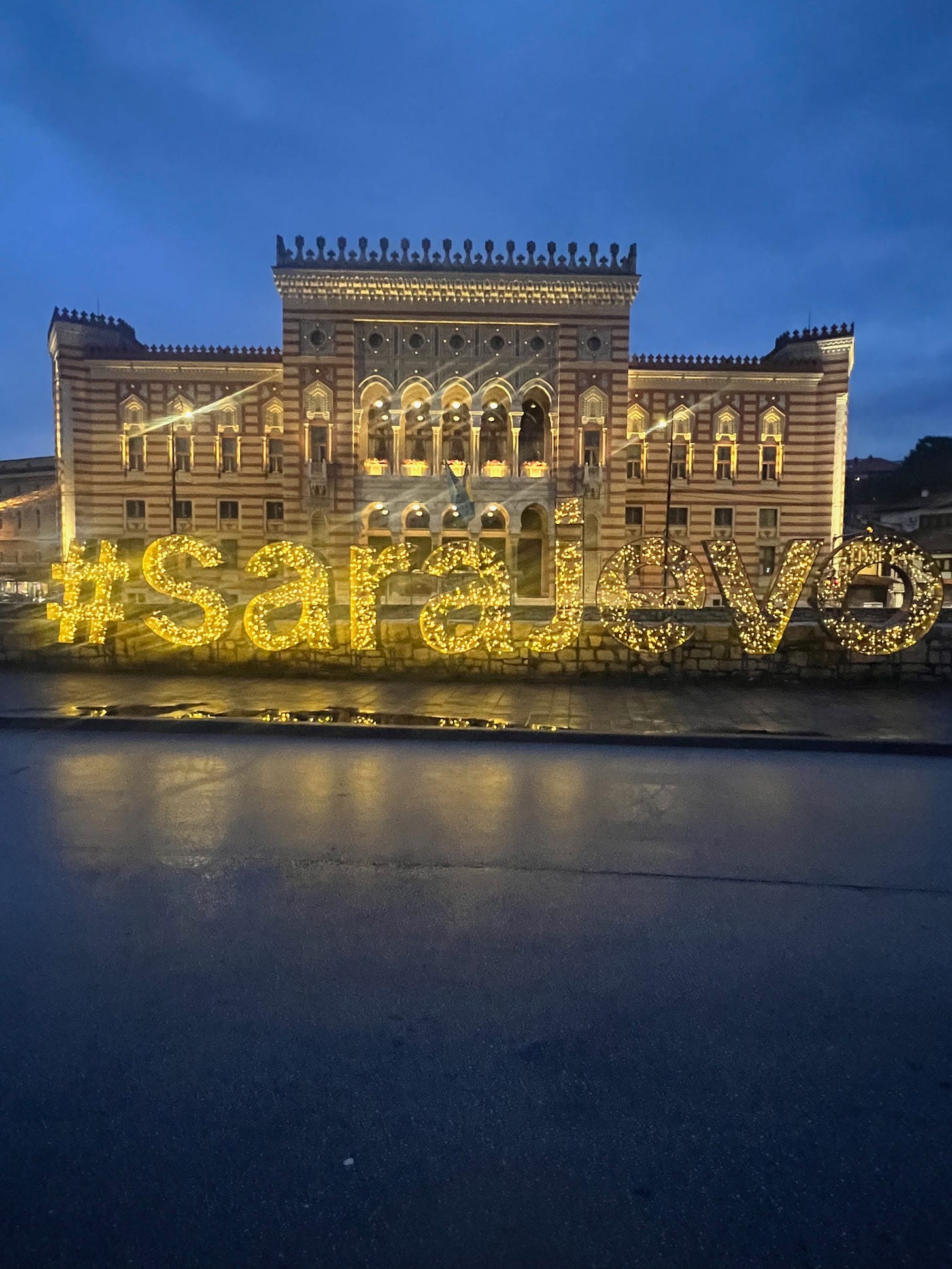Tunnel of Hope…Past and Present
Wars end, eventually.
In the middle of war, the end is hard to imagine, and the aftermath unpredictable—devastation restored, justice reconciled, the younger generation taking over…or not? At the moment focus and hope is on a possible peace in the Middle East between Israel and Palestinians. In Syria citizens are also in a suspended state of optimistic but cautious hope and skepticism after 13 years of civil war. Other areas of the globe remain locked in conflict.
Recently I returned for a 30th anniversary of the Siege of Sarajevo. During the nine-year Yugoslav Wars (1991-1999) as the country broke up, Serbian forces surrounded the Bosnian city of Sarajevo, blockading it and cutting off food, water, gas, heat, all power, and weapons. Shelling Sarajevo from the surrounding hills 24 hours a day, dropping over 500,000 bombs, Serbia’s 13,000-man force tried to break the will of the citizens, but the Bosnians refused to give up.
Digging for four months, they built an 800-meter tunnel from the airport where the United Nations had control. Through the Tunnel of Hope Bosnians managed to ferry supplies into the city. I remember a Slovenian writer and colleague of mine in International PEN who ran that gauntlet more than once with funds and supplies donated from writers around the world for our colleagues in Sarajevo.

Lasting from April 1992 to February 1996, the Siege of Sarajevo was three times longer than the Battle of Stalingrad and the longest siege of a capital city in modern history.
Last month I arrived for a 30th anniversary board meeting of the International Crisis Group, which was born out of that conflict when three international professionals envisioned an organization that could put top researchers on the ground to discern truth from propaganda and work with a board of high level ex-presidents, foreign ministers and diplomats from around the world who could advise and pass on suggested actions and also operate as a backchannel. Though I’ve never served in government, I was active with nongovernmental organizations and asked to join the board from the second board meeting of the International Crisis Group. I served for 22 years and got a global education in the process. The October 2025 board meeting in Sarajevo was a reunion for many of us and reminded us that even out of one of the worst conflicts, peace can be born.

The day before our gathering, I arrived in Sarajevo and had a guide take me around. Thirty years ago he had been a student and an athlete, a runner, but like most young men he joined the resistance and special forces. He lost part of his leg in the conflict, but he worked for the resistance the whole four years. He lost half of his friends in the conflict.
“We fought and worked in six-hour shifts, then slept six hours, then spent six hours protecting the churches, synagogues and mosques,” he said. Sarajevo took pride in being an ecumenical city where all religions were welcome, he explained.
He told me that when the siege started, he lived at home where his mother loved books and reading and had a library of over 1000 volumes. When the siege was over, she had only two books left because the family had to burn the books for fuel. They also burned their floorboards.
Sarajevo has been largely restored now with modern buildings, hotels, and shopping malls, but some of the bombed-out buildings and those shot with mortars are left standing along the roadside and highways as reminders. The memories abide. How the population functions with those memories a generation later is an ongoing story.

Before the war, Bosnia had Christians, Muslims and Jews, Serbs, Croats and Bosnians all living together. That easier peace has not returned, but there is no more violence of war, and the peace is a daily job.
Sarajevo has a unique history in Europe and the world, for it is also here that the spark for the First World War was lit with the assassination of Archduke Franz Ferdinand, heir to the Austro-Hungarian throne. Shot by a Serbian nationalist in 1914, the Archduke’s murder heightened existing tensions between Austria-Hungary and Serbia and led to an ultimatum then declaration of war. This triggered a complex system of alliances that ultimately brought the major European powers into war.
“People don’t want conflict,” insisted my guide, now a father himself. But how to keep the peace is up to each of us, he said.
